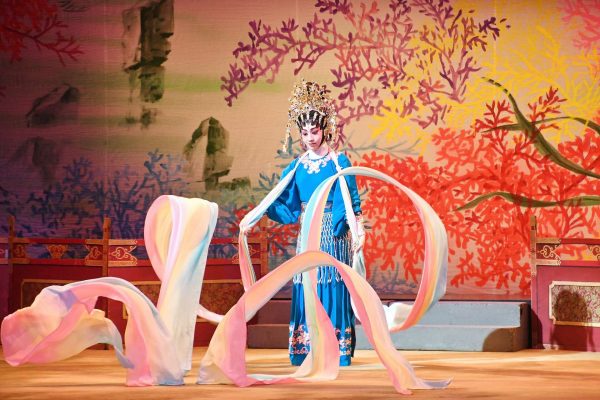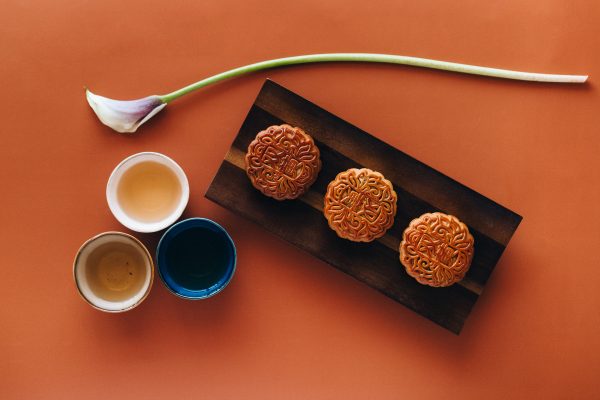Except Chinese Lunar New Year and New Year, there’s another New Year in China – Losar, also known as Tibetan New Year.
As you may guess by its title, Tibetan New Year is based on Tibetan calendar. It is the most important festival to Tibet people and is now one of the national intangible cultural heritages.
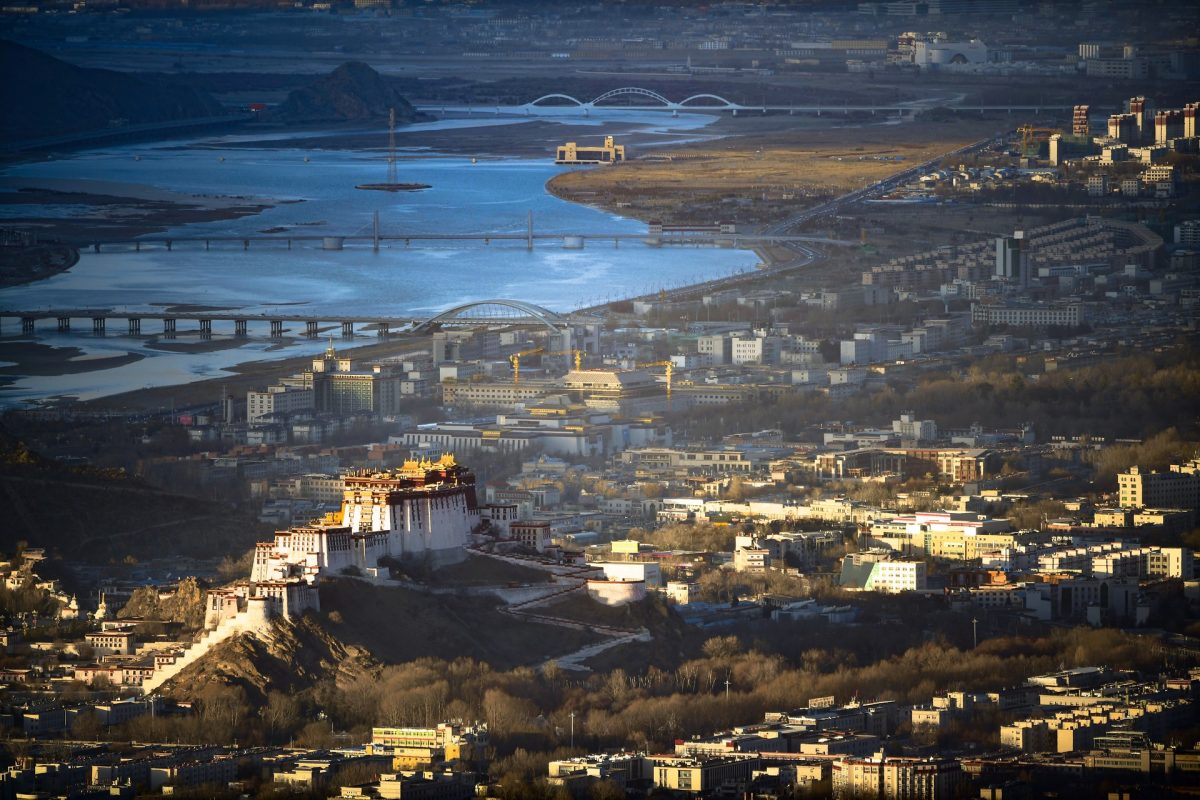
(The Potala Palace under the sun. Photos: CNS)
This year 2023, the happy ringing tone of Chinese New Year and Losar is just about 1 month apart, with 1st day of CNY falls in 22nd January while the Losar in 21st February.
First and foremost, when is the start-year for Tibetan New Year?
Folklore of Tibet is passing down in the form of oral culture, the exact time when the Tibetan New Year becomes an official festival can’t be determined accurately by now.
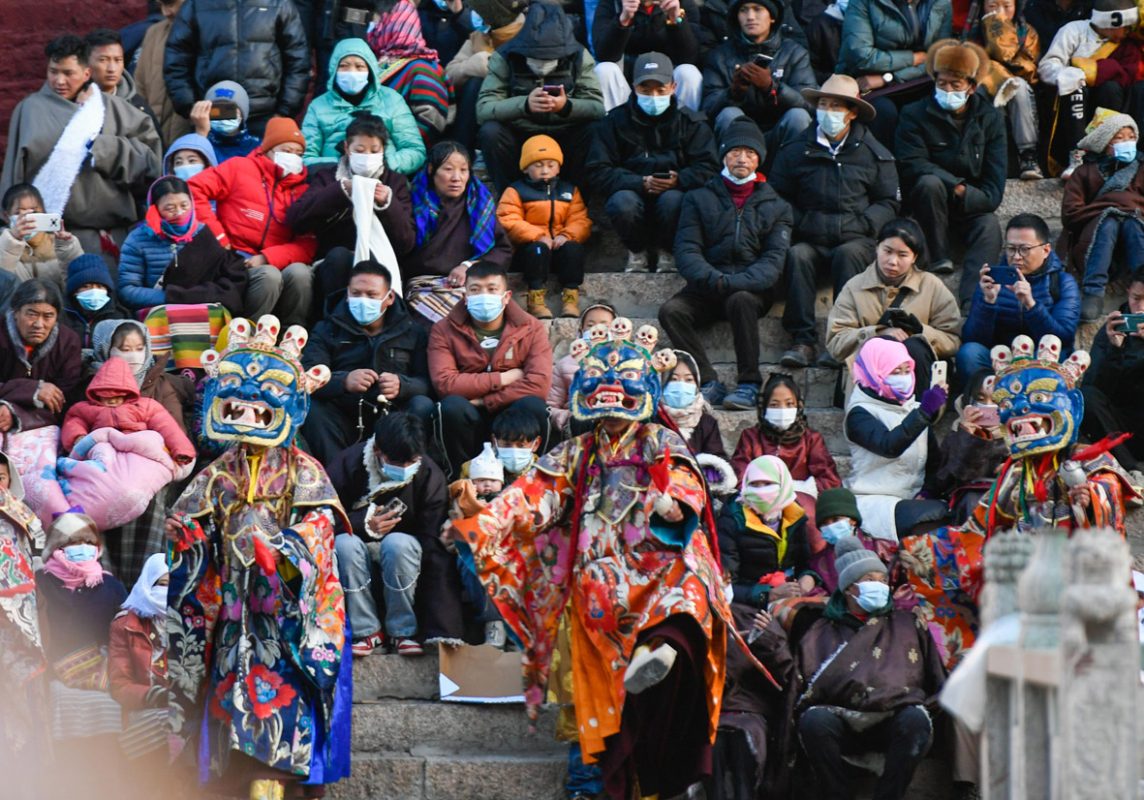
(The cham dance in Tsurphu Monastery. Photos: CNS)
Jiru Basanlob, the research director and curator of cultural relics from Exhibition Department of Tibetan Museum, noted that probably the start year begins when the traditional Tibetan calendar gets started, and this marks off a more believable point of commencement for the festival.
“When Tibet New Year just began, only small and scanty festive related events were going on. But since this festival has evolved after a lengthened period, this has developed into an entire series of celebrations.” Jiru added, in Tibet here, we have four major New Years, namely, Nyingchi Gongbu New Year, Ngari Pulan New Year, Xigaze Agricultural New Year and Lhasa New Year (Losar).
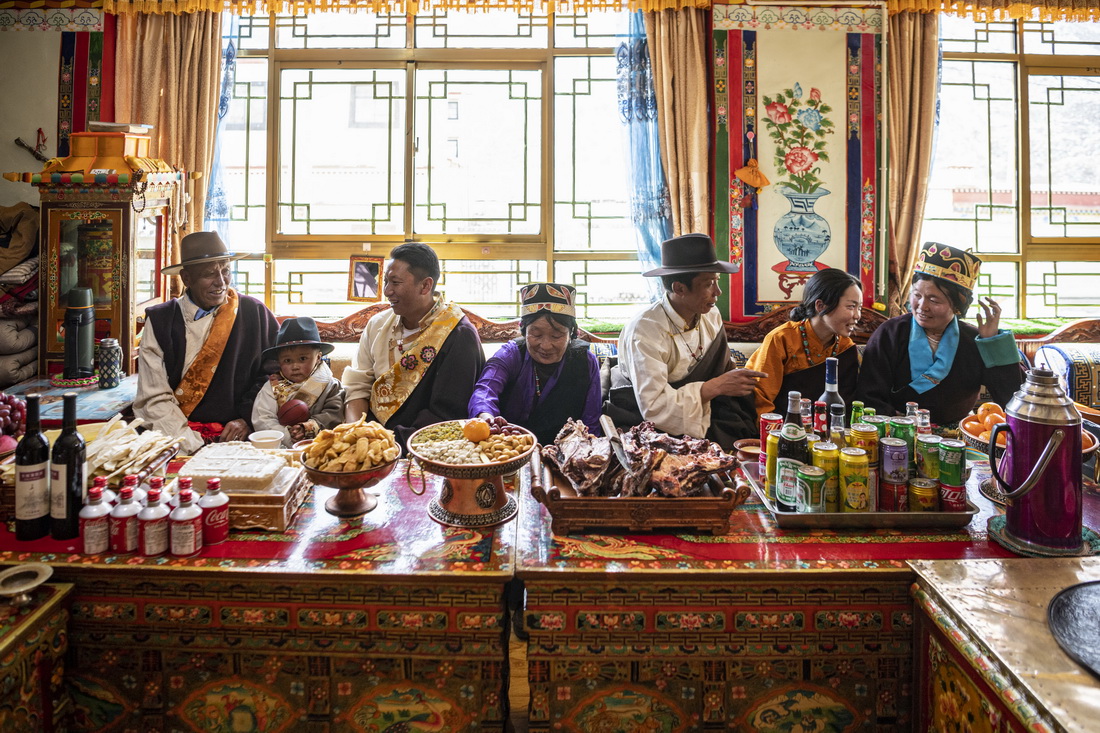
(Family gathering on the day of Tibetan’s New Year eve. Photos: Xinhua)
These four Tibetan New Years are festive occasions to bid farewell to the old and leap into the new, to celebrate reunion between members in the family, which is, indeed, a shared concept across China. Though the four New Years may look slightly different due to distance across time and regions, there still exists some related customs and rituals, which still reflect Tibet-oriented ideology, outlook and value.
On the Tibetan’s New Year eve, much similar to Chinese New Year eve, family will just rise early and starts to make food to welcome the new year. It is Tibetan custom as well to buy assortment of foods just before the festival. On the first day of the New Year, everyone will gather around the table to eat, the father in the family gets to say “This coming year should be better than all the previous!”
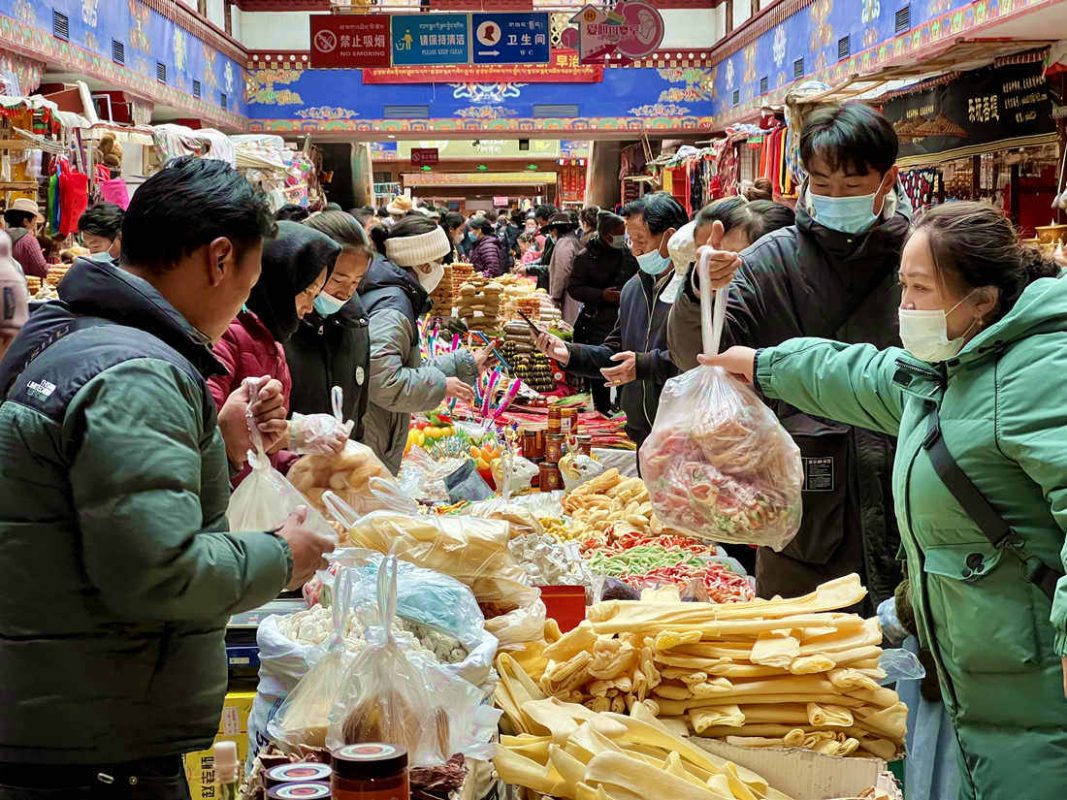
(Tibetan New Year’s Market. Photos: People’s Daily)
When this comes to customs, Jiru said, on the eve of New Year, Tibetan people will eat the festive food – “Gutu”, which is a kind of dough bakery, seasoned with 9 different ingredients.
When making “Gutu”, people will wrap this with wool, charcoal, springle with pepper, salt, and etc., some people will mode this dough into the shape of sun, moon and few others; each ingredient will carry forth some particular symbolic significance. For example, charcoal can mean a black heart. If a child by any chance has taken in charcoal when eating “GuTu”, parents will remind the child to be nice to people around, not to cause harm to people.
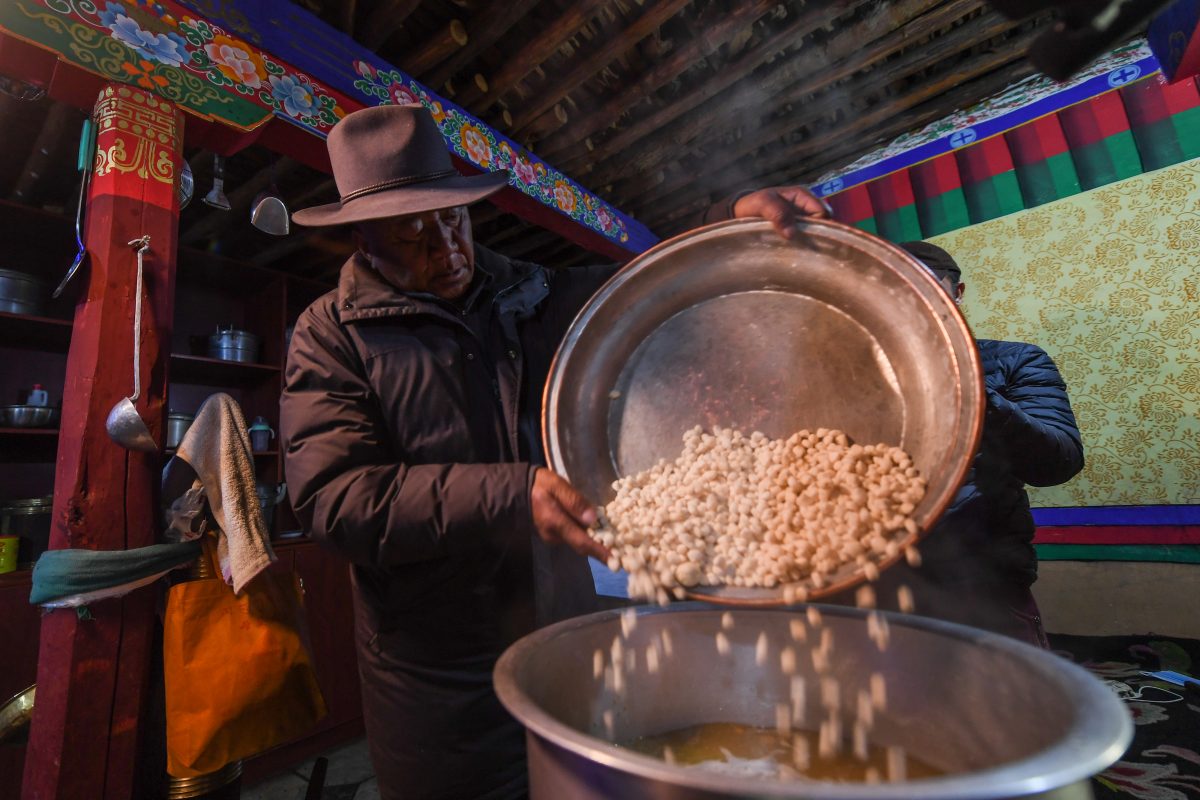
(Tibetan people are making ‘Gutu’. Photos: CNS)
During Losar, Tibetan people need to present Hada (woven scarf of white color that represents filial piety) to their parents and other seniors with gratitude and respect, Jiru added. “People also have to put hulless barley seedlings, ‘Qiema’ box (a rectangular wooden box with roasted barley and fried wheat grain which bears auspicious meanings), together with farm products harvested into a display cabinet. This act gestures that all sorts of hard work throughout the year are fairly rewarded with comfort and joy.
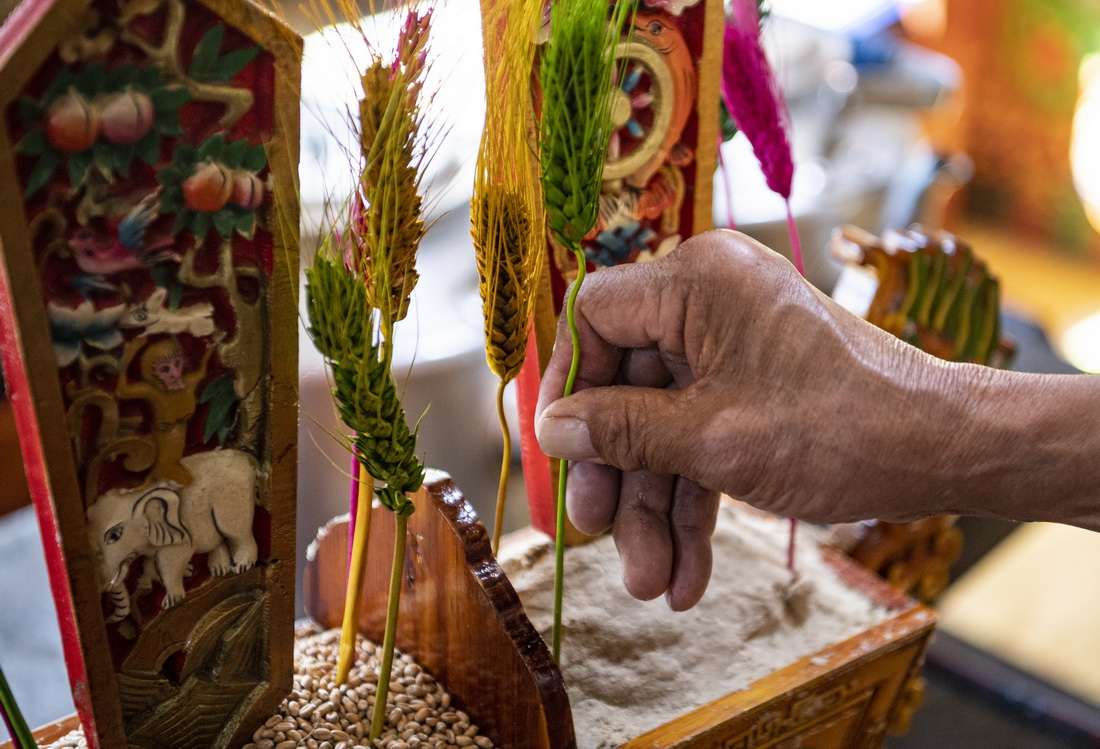
(‘Qiema’ box. Photos: Xinhua)
With the passing of time, the Losar customs are undergoing change.
For example, this used to be that on the first day of the first month, people had to get up early to bring in water from river or spring nearby. Whoever turns out to be the first one bringing in the first bucket of water will be blessed with good fortune and wealth through the year. Custom as such symbolizes praise and best wish dedicated to the virtue of diligence. Today, almost every household in the city has water tap, the custom is therefore fading out.
We actually get to see lots of interactions between CNY and Losar. With communication and integration between Tibetan and Han ethnic groups keep going on and on, we expect the merging and integration of festive folk customs continues.

(Photos: CNS)
On a more concrete level, are there any obvious evidence that the two cultures are affecting each other? We can see some commonly shared folkways, linked with their very similar meanings behind these customs.
For instance, on the eve of Chinese New Year, Tibetan and Han people will do some domestic clean-up, hopefully, this will lead to a new year with forthcoming happiness and new spirits. CNY has the custom of putting up New Year scrolls, hanging up red lanterns, and handing out New Year’s red pockets. Customs like these have been gradually adopted by the Tibetan people.
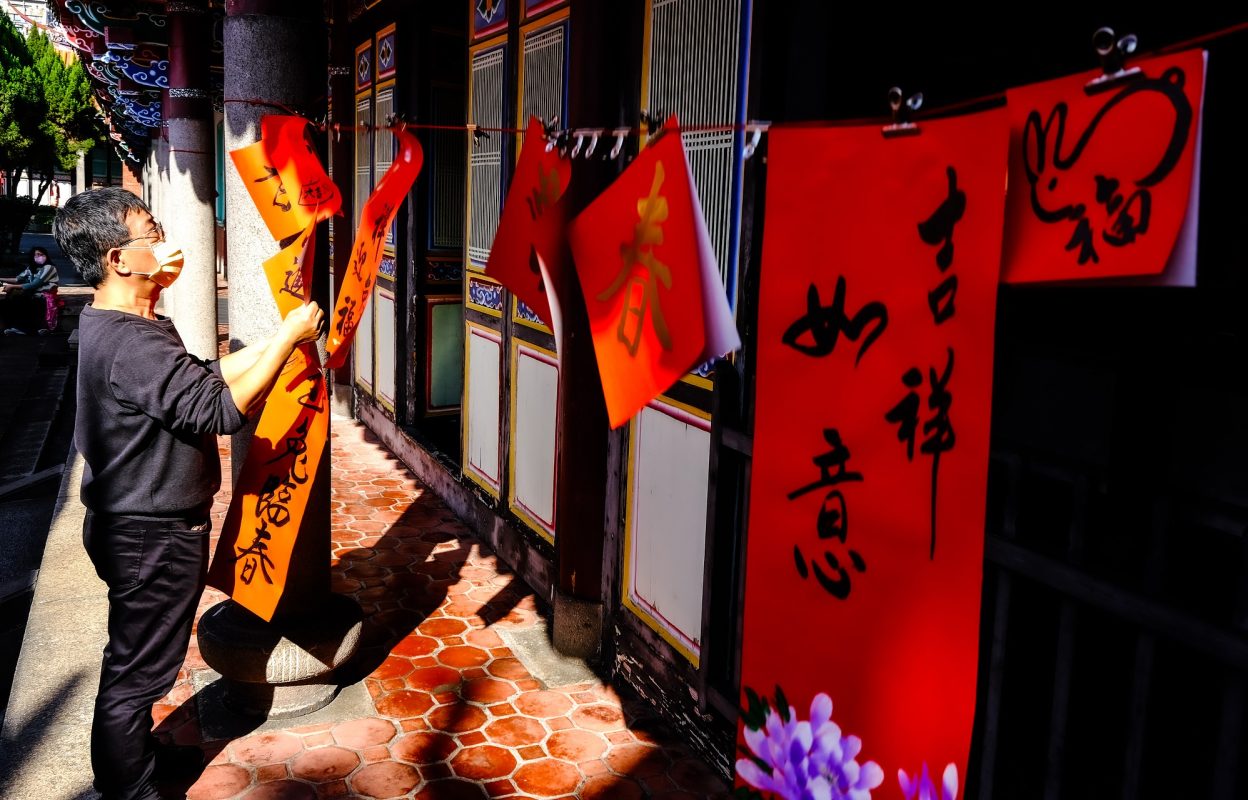
(Photos: CNA)
While many other ethnic people working and living in Tibet also wear Tibetan costumes, sip Chhaang (Tibetan alcoholic beverage made from “Qingke”), and put Losar Metok (Tibetan New Year flowers) in their homes to celebrate the festival.
Jiru noted, across history, Tibetans are admirably open and acceptive ethic group. Through the years, we’ve seen Tibetan and Han ethnic groups interact and learn from each other as evident in many occasions, including the New Year. Two ethnic groups also have shared festival cultures, and there are other signs that such integration will continue.

